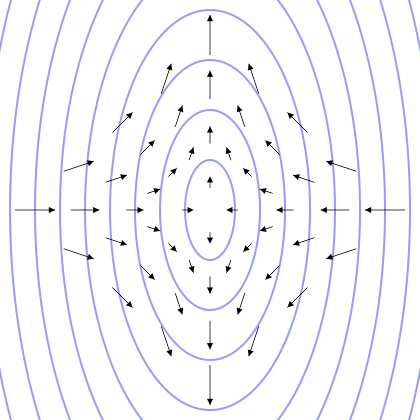asca said:
Summary: How can an interferometer detect Gravitation waves, if the change in space time due to gravity affects all the rulers (and clocks) in that spot?
Sorry if the question has been already answered, but I didn't manage to find it. Let's go back to ligo detection of gravitational waves, my question is the following: if space time changes its texture due to a gravitational effect, all the rulers (and clocks) in that spot will be affected, so also the electromagnetic wave will have its own ruler and clock changing the same way they change for the LIGO arm, and so there should not be any change in the number of wawelenghts and no interference pattern changes, so no detection. What am I missing?
While it's possible to view gravity as "rulers and clocks changing", that's not really the most popular analogy to use to describe gravitational waves.
In spite of the fact that it's not popular, let's look at an oversimplified example of how it might work.
Consider Einstein's description of a curved spatial geometry via a heated marble slab, as described in chapter 24 of Einstein's book "Relativity: The Special and General Theory".
https://www.bartleby.com/173/24.html.
The basic idea is that you have a heated marble slab, the rods expand with heat and contract with cold, and that you find the geometry of the slab as measured by these rulers isn't Euclidean.
Our heated marble slab represents only spatial geometry, and not space-time geometry. This is oversimplified, but it's the best I can do to remain comprehensible.
One can definitely detect the change in geometry caused by the heat. A simple example illustrates this. Suppose you make a quadrilateral figure with four equal sides, and two equal diagonals, a square.
Then, in an Euclidean geometry, the ratio of the diagonals to the sides will always be ##\sqrt{2}##.
Now, let's represent a non-Euclidean geometry, following Einstein's suggestion, by heating the center of the marble slab, but not the outer perimeter. Unheated, the outer rods do not expand, but sections of the diagonal rods do. This causes the ratio of the diagonal length to the outer side length to change from it's Euclidean value.
Then the ratio of the diagonal to the side is not ##\sqrt{2}## anymore, and we see a measurable result from the geometry changing.
Most descriptions of Ligo do not involve the idea of rulers expanding, but it's a possible interpretation of the metric changes, which is what the mathematics actually models.
Ligo does not do the equivalent of taking the ratio of the outside of the square to the diagonal - it's got a different setup. I imagine it might be possible to make a more detailed setup that operates in the same way as the Ligo detector does to detect the changes in geometry, but this short post is not that detailed, it just answers the question of how one could detect the changes induced in the geometry.
